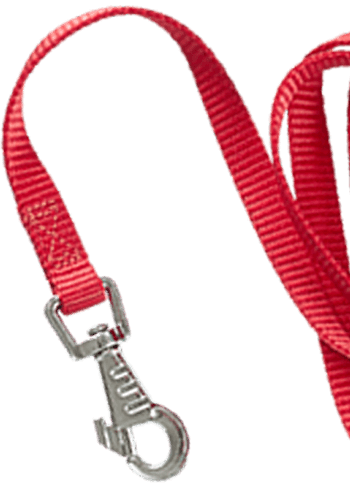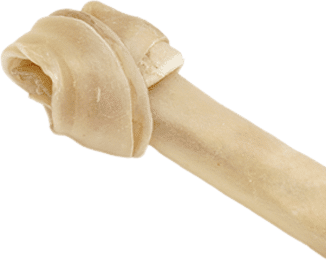


The Labrador Retriever and Bernese Mountain Dog may look different at first glance, but they’re both well known as beloved family pets. Whether you are long-time dog owners ready to adopt another puppy, or new to the joys of bringing a canine family member into the fold, these are two dog breeds you’re likely considering.
Labradors are a true favorite among both experienced and novice owners, coming in as the most popular dog in America for 30 consecutive years. Bernese Mountain Dogs are also a well-recognized breed and adored family dogs, ranking at 22 out of 195.
Both are affectionate, loyal, and smart breeds, so there’s truly no way to go wrong with either dog — but when it comes to choosing the right one for you, how do you know where to start?
Before you make any decisions, you should do plenty of research on both breeds. Luckily, this detailed guide will tell you what you need to know about Labs and Berners, from their origin stories to their personalities and everything in between.
The Labrador Retriever is a medium-to-large-breed dog with ancestral roots that go back to pre-colonial Newfoundland, Canada. Some sources say that the first Labradors were born in the 16th century, while more recent records show they were likely bred in the 1800s.
It was their predecessors, the now-extinct St. John’s Dog, that were around in pre-colonial and colonial Canada. At that time, local fishermen bred small water dogs with Newfoundlands, which resulted in the St. John’s Water Dog.
This dog proved to be an impressive specimen that used a soft mouth to gently retrieve fish, nets, and other game or materials. Their water-repellent coats and webbed paws aided them in swimming, thus creating the perfect water dog.
In the 19th century, St. John’s Water Dogs were exported to England, where they were bred with other dogs to create our modern-day retriever breeds, including the Labrador Retriever.
It wasn’t until the 20th century that the Labrador Retriever made its way to the United States, where it became an officially-recognized breed by the American Kennel Club in 1917.
Over the past one hundred years, Labradors have steadily grown in popularity to become America’s favorite dog, thanks to their friendly, patient, and loyal temperament. Today, certified breeders work hard to stay true to the Labrador’s purebred origins, and caring families can adopt these dogs throughout the country.
The Bernese Mountain Dog is a large-breed dog from Berne, Switzerland. This working dog is also called a Berner Sennenhund, a Bernese Cattle Dog, a Berner, or simply a Bernese.
It is one of four Alpine pasture dogs specializing in farm work. Berners would also aid dairymen and herders by pulling carts. It’s estimated that the Bernese breed has been a part of farm life in the Alps for more than 2,000 years.
Before this dog was called a Bernese, it was known as the Durrbachhund. These early Bernese were named after an area called Durrbach, where these dogs were particularly numerous.
Experts believe the breed has Molosser roots. Molosser dogs come from Ancient Greece and are recognized by their broad chests, muscled legs, and overall stature. Molossers are the ancestors of other large dogs like St. Bernards, Great Pyrenees, and Mastiffs.
Although it technically remains a part of the Molosser family, in 1902, the Swiss Kennel Club recognized the Durrbachhund as an individual breed. It eventually was renamed the Bernese Mountain Dog.
At the end of the 19th century, farmers began to import other types of working dogs. They also started relying on automated modes of transportation for formwork.
As a result, the number of purebred Bernese dogs declined, and the breed almost faced extinction. Today, certified breeders work hard to keep their population and bloodlines healthy and steady, and Bernese puppies are available for adoption throughout the United States.
| Labrador Retrievers | Bernese Mountain Dogs | |
| Height | Males: 22-25 inches
Females: 21-24 inches |
Males: 25-27.5 inches
Females: 23-26 inches |
| Weight | Males: 65-80 pounds
Females: 55-71 pounds |
Males: 80-115 pounds
Females: 70-95 pounds |
| Size | Medium-to-large dog breed | Large-to-giant dog breed |
| Coat | Weather-resistant double-coat that sheds in full twice a year | Long, thick tricolored double-coat that sheds in full twice a year |
One of the best things about English Labradors is their sleek and pristine appearance. These dogs are unmistakable from a mile away, with a cream-tinted coat and dark features.
Chocolate-brown eyes, a wet, black nose, and a dark mouth amidst white-gold fur — their charming appearance is unmatched by almost any other breed.
Their blocky heads and stout bodies come in at 21 to 25 inches tall at the shoulder. Adult Labradors weigh between 55 and 80 pounds, which places them in the medium-to-large breed range.
These pups love to snuggle, so although they’re larger dogs, you shouldn’t be surprised if your Lab tries to cuddle on you like a lapdog!
Labradors also have a thick, weather-resistant double-coat. Not every dog has this unique coat — it’s a particular characteristic of this breed’s origin.
The undercoat acts as an insulator in the winter, and it helps to keep the dog cool in the summer. You can expect their special undercoats to shed heavily twice a year to prepare for the changing seasons.
Thanks to their tricolor coats and extra-large yet sturdy stature, Bernese Mountain Dogs are one of the most recognizable breeds in the world.
Bearing a white chest, a black top, and brown eyebrows, Berneses are easy to spot. They have a sweet appearance with their long double-coat, floppy ears, and calm yet happy disposition.
These dogs are big. In fact, they’re so big that they’re considered a giant breed. Berneses stand at 23 to 28 inches in height at the shoulder and weigh between 70 and 122 pounds.
Their size in adulthood depends on the dog’s sex and genetic family line, but you can get a better idea of what your Bernese Mountain puppy will look like based on his parents’ appearances.
Like Labradors, Bernese Mountain Dogs also have a unique double-coat that protects them from harsh cold in winter and keeps them cool in the hot summer weather. These working dogs are built for moving about outdoors, so it’s no surprise that the double coat is so integral to the Bernese’s appearance and functionality.
However, their double coats do require frequent brushing and grooming, and you can expect excessive shedding during the spring and fall months as the seasons change.
Health: Bernese Mountain Dog vs. Labrador Retriever
| Labrador Retrievers | Bernese Mountain Dogs | |
| Life Expectancy | 10-13 years, which is much longer than the average large-breed dog | 6-8 years, which is standard for the average large-breed dog |
| Health Problems | Hip dysplasia, elbow dysplasia, loose knee joints, weight problems | Cataracts, hip dysplasia, elbow dysplasia, Willebrand’s Disease, hypomyelination, hypothyroidism |
| Allergies | May experience environmental allergies
Not a hypoallergenic dog, so people with allergies should not adopt a Labrador |
May experience environmental allergies
Not a hypoallergenic dog, so people with allergies should not adopt a Bernese |
One of the reasons people prefer Labrador Retrievers is their surprisingly long life span.
Large-breed dogs have an average lifespan of 10 years, while small-breed dogs typically live well into their teens — but Labs are around for the long haul (which means much more time with your favorite companion)!
However, as with any dog, Labs are susceptible to genetic issues like hip dysplasia, elbow dysplasia, and loose knee joints. These are some of the most common health problems that Labs face.
It’s important to point out that good care and an active lifestyle can help keep your dog healthy, which is why it’s essential to feed them a proper diet, exercise them regularly, and provide supplements that can help with combating any aches and pains.
If you want a better explanation of your Labrador’s health, you should adopt from a certified breeder who will have a detailed history of his parents’ health and bloodline.
Like most other giant dogs, Bernese Mountain Dogs have a shorter lifespan than smaller dog breeds. As shown below, the smaller the dog, the longer the life expectancy.
Bernese’s lifespans average between six to eight years, although ten years is not uncommon. Due to their large size, their bones can only support mobility for so long. Also, experts say that their average lifespan is short because these dogs are prone to cancer.
To prevent joint issues like hip dysplasia, elbow dysplasia, and arthritis, Bernese owners should focus on providing a good diet, proper exercise, and even supplements.
Of course, you can get a clearer idea of a Bernese Mountain dog’s health by requesting information about their family lines when you purchase your pup from a reputable breeder.
Daily Life: Bernese Mountain Dog vs. Labrador Retriever
| Labrador Retrievers | Bernese Mountain Dogs | |
| Grooming and Shedding | Moderate shedders that require low-maintenance grooming, like weekly brushing and professional grooming every couple of months, and more often during spring and fall shedding seasons | Moderate shedders that require moderate maintenance grooming, like brushing several times a week with professional grooming services needed every couple of months, and more often during spring and fall shedding seasons |
| Temperament and Personality | Affectionate, alert, loving, outgoing, loyal, gentle, calm, sweet, energetic, loves new people and other animals instantly | Affectionate, docile, friendly, loving, playful, sweet, outgoing with most people but tend to bond closely with one person |
| Activity and Energy Levels | Active energy levels that require at least 80 minutes of quality exercise per day; otherwise calm and patient with barking only to alert | Moderate energetic levels that require at least 30 minutes of exercise per day; calm energy levels overall with rare barking |
| Intelligence and Trainability | Easy to train and has been ranked the 7th smartest dog breed in the world | Easy to train and has been ranked the 27th smartest dog breed for working and obedience intelligence |
A day with a Labrador Retriever is never a dull one. Whether you want to go for a hike or spend time lazing about inside with toys and treats, Labradors are prepared to do just about anything.
They are such playful, affectionate, and loyal pups that they’ll do anything you want to do as long as it means they can be by your side. It’s why they make perfect family pets. They are also very patient with children, but also ensure children and dogs are closely monitored, and not left alone.
They are also stranger-friendly dogs, which means they’re always happy to meet someone new!
Much of that leniency and obedience come from Labrador Retrievers’ energy levels. These high-energy dogs like to be given a job and kept busy — after all, it’s what they were bred to do!
This is one reason why Labs are the seventh most intelligent dog breed in the world, meaning they can learn a new command in a minimum of 10-15 repitions for any puppy and obey at least 95% of the time with proper training. You’ll truly be amazed at how trainable and intelligent your Lab puppy grows up to be.
Labrador Retrievers require at least 80 minutes of quality exercise per day to keep their bodies in good shape and their minds sharp. However, when your Lab is still a puppy (under two years old), be careful of how much exercise and jumping he’s doing because too much horseplay can affect their joints as they grow.
Some breeders will recommend that you avoid allowing your puppy to jump for the first year of his life to reduce the impact on the shoulder, hip, and elbow joints. Excess jumping can also be prevented through obedience training.
Bernese Mountain Dogs
Whether you have children or another pet in the home, Bernese Mountain Dogs are wonderful pets due to their calm and affectionate nature. They are more than willing to meet new people and animals, although they may take time to warm up due to their somewhat aloof personality.
Bernese dogs are natural workers, so they like to be kept busy, which means they require plenty of playtime. Berneses prefer large, fenced-in yards where they can roam and run free without the limitations of a leash.
They need at least half an hour of exercise time per day, but most experts recommend an hour or more every day.
Bernese dogs also have high obedience and working intelligence, which makes sense considering their background! They are ranked 22nd on the list of the most intelligent dogs, which means that they are excellent working dogs who can learn a new command through minimal repetition depending on the puppy.
There is no true answer to which dog is “better,” but you can weigh your options by taking your personal preferences and general lifestyle into consideration.
As with any dog, you need to be prepared for vet bills, grooming, obedience training, and plenty of exercise and playtime — but each breed has unique personality traits and other characteristics that may be a better match for you.
Start with essential questions, like:
Both Labrador Retrievers and Bernese Mountain Dogs are amazing breeds that are sure to bring your family a lifetime of joy, companionship, and unconditional love — but unless you’re planning to adopt puppies of both breeds, you have to think about which one is better suited for you and your lifestyle.
Think about the questions above that pertain to your home, family, and personal preferences, and you’ll have an easier time figuring out which breed is best for you.
But no matter which dog breeds you’re looking at, chances are you’ll find that Labrador Retrievers are a top contender! This brilliant, loyal, affectionate, and gentle dog is perfect for families of any size.
If you’re thinking about adding a Lab to your family, make sure you get one from a reputable, certified breeder who can provide you with the proper paperwork and a full history of his lineage.
At Snowy Pines White Labs, you’ll find some of the country’s calmest and most intelligent Labrador Retrievers. Learn more about Snowy Pines’ Labrador puppies today!